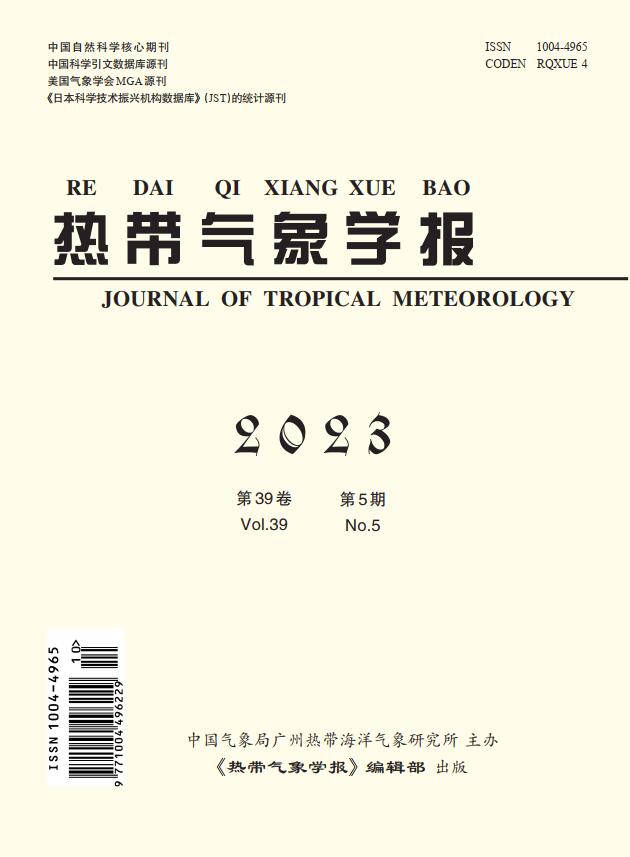Experiments with the Improved Dynamical-Statistical-Analog Ensemble Forecast Model for Landfalling Typhoon Precipitation over South China
IF 1.4
4区 地球科学
Q4 METEOROLOGY & ATMOSPHERIC SCIENCES
引用次数: 2
Abstract
: In recent work, three physical factors of the Dynamical-Statistical-Analog Ensemble Forecast Model for Landfalling Typhoon Precipitation (DSAEF_LTP model) have been introduced, namely, tropical cyclone (TC) track, TC landfall season, and TC intensity. In the present study, we set out to test the forecasting performance of the improved model with new similarity regions and ensemble forecast schemes added. Four experiments associated with the prediction of accumulated precipitation were conducted based on 47 landfalling TCs that occurred over South China during 2004 - 2018. The first experiment was designed as the DSAEF_LTP model with TC track, TC landfall season, and intensity (DSAEF_LTP-1). The other three experiments were based on the first experiment, but with new ensemble forecast schemes added (DSAEF_LTP-2), new similarity regions added (DSAEF_LTP-3), and both added (DSAEF_LTP-4), respectively. Results showed that, after new similarity regions added into the model (DSAEF_LTP-3), the forecasting performance of the DSAEF_LTP model for heavy rainfall (accumulated precipitation ≥ 250 mm and ≥ 100 mm) improved, and the sum of the threat score (TS250 + TS100) increased by 4.44%. Although the forecasting performance of DSAEF_LTP-2 was the same as that of DSAEF_LTP-1, the forecasting performance was significantly improved and better than that of DSAEF_LTP-3 when the new ensemble schemes and similarity regions were added simultaneously (DSAEF_LTP-4), with the TS increasing by 25.36%. Moreover, the forecasting performance of the four experiments was compared with four operational numerical weather prediction models, and the comparison indicated that the DSAEF_LTP model showed advantages in predicting heavy rainfall. Finally, some issues associated with the experimental results and future improvements of the DSAEF_LTP model were discussed.华南登陆台风降水改进的动态-统计-模拟集合预报模式试验
本文介绍了登陆台风降水动态-统计-模拟集合预报模式(DSAEF_LTP模式)的三个物理因素,即热带气旋路径、登陆季节和台风强度。在本研究中,我们开始测试改进模型的预测性能,增加新的相似区域和集合预测方案。基于2004 - 2018年华南地区47个登陆tc,进行了4项与累积降水预测相关的试验。第一个实验设计为包含热带气旋路径、热带气旋登陆季节和强度(DSAEF_LTP-1)的DSAEF_LTP模型。其余3个实验均在第1个实验的基础上,分别增加了新的集合预测方案(DSAEF_LTP-2)、新的相似区域(DSAEF_LTP-3)和两者(DSAEF_LTP-4)。结果表明,在模型中加入新的相似区域(DSAEF_LTP-3)后,DSAEF_LTP模型对强降雨(累计降水量≥250 mm和≥100 mm)的预测性能得到改善,威胁评分(TS250 + TS100)的总和提高了4.44%。虽然DSAEF_LTP-2的预测性能与DSAEF_LTP-1相同,但当同时加入新的集合方案和相似区域(DSAEF_LTP-4)时,预测性能明显提高,优于DSAEF_LTP-3, TS提高了25.36%。将4个试验的预报效果与4种常用数值天气预报模式进行了比较,结果表明,DSAEF_LTP模式在预报强降水方面具有优势。最后,讨论了与实验结果相关的一些问题以及DSAEF_LTP模型的未来改进。
本文章由计算机程序翻译,如有差异,请以英文原文为准。
求助全文
约1分钟内获得全文
求助全文
来源期刊

热带气象学报
METEOROLOGY & ATMOSPHERIC SCIENCES-
CiteScore
1.80
自引率
8.30%
发文量
2793
审稿时长
6-12 weeks
期刊介绍:
Information not localized
 求助内容:
求助内容: 应助结果提醒方式:
应助结果提醒方式:


